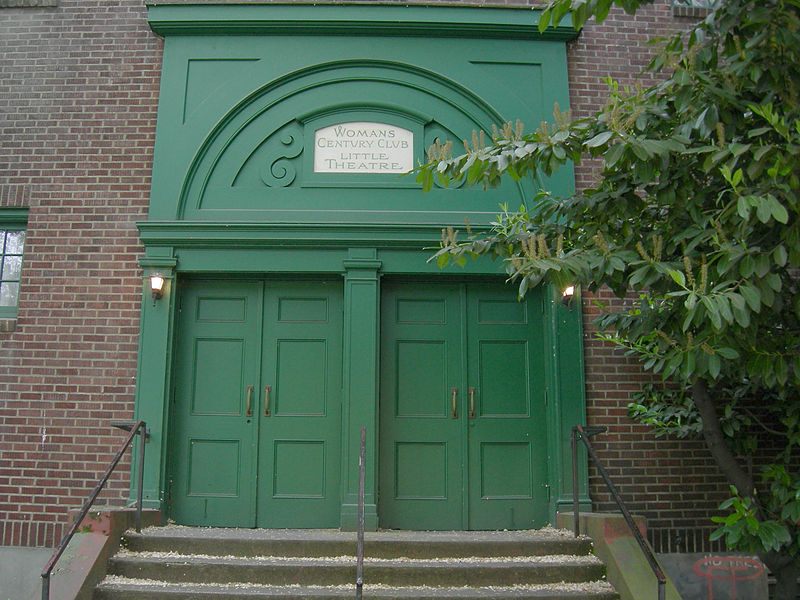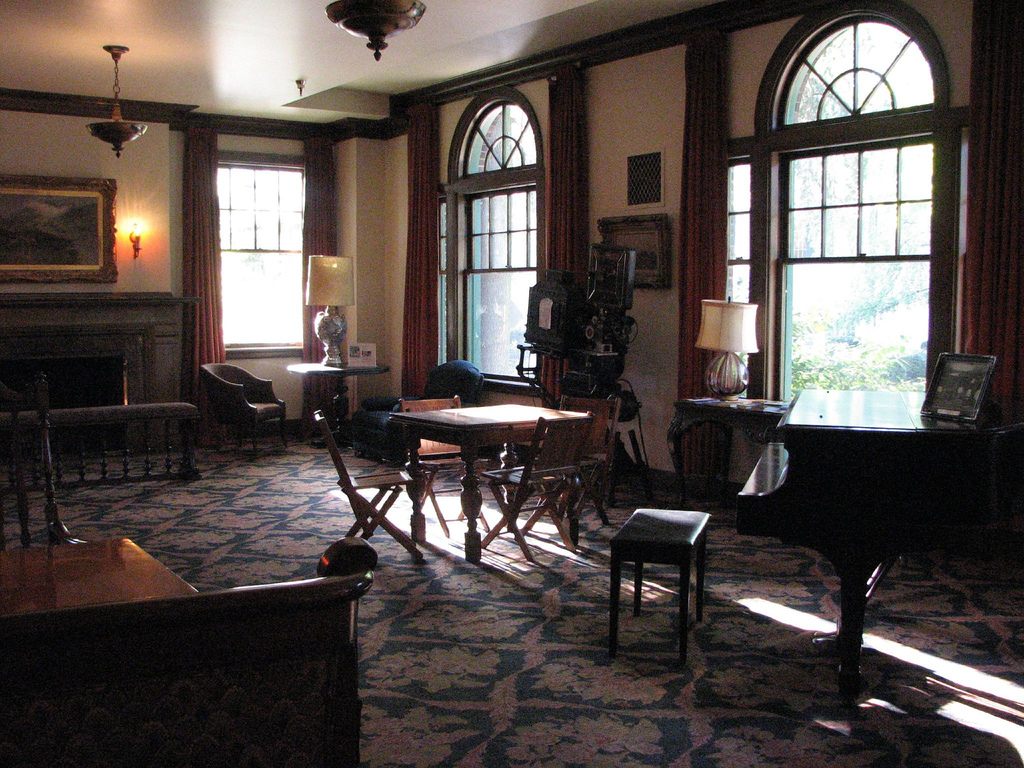One of Seattle’s Most Beautiful and Ghostliest Theatres Goes Dark
 Harvard Exit Theatre (via Facebook)
Harvard Exit Theatre (via Facebook)
For decades, the three-story brick building on the corner of Broadway and East Roy in Seattle’s Capitol Hill has felt like a portal into the past. Nestled on a tree-lined street, its lobby padded by plush carpeting and rich red drapes, the Harvard Exit has always felt like an echo of a more elegant era. But the building, constructed by a women’s group in 1925 and transformed into one of the city’s first art theatres in the 1960s, is now set for a new chapter.
In early December, the Landmark Theatre chain — which has operated the site as a theatre since 1979 — announced its screens would go dark by mid-January. A local developer known for historic re-use projects is reportedly the new owner, although the ultimate fate of the building remains unclear.
 Lobby of the Harvard Exit (photograph by Mariano/Flickr)
Lobby of the Harvard Exit (photograph by Mariano/Flickr)
The Harvard Exit was famous in Seattle for several reasons. Known for showing independent, arty, and foreign films, and for hosting film festivals, it was an important part of the city’s alternative culture for decades. The lobby (complete with grand piano, fireplace, and chandelier) was the most charming of any movie theatre in town, a far cry from the stained carpet and noxious faux-butter fumes of most establishments. But beyond the fine films and furnishings, the building had a reputation for ghosts, including claims that the city’s first and only female mayor, Bertha Landes, was known to haunt the building.
The site also played a less well-known role in local women’s history. It was constructed in 1925 as the headquarters for the Women’s Century Club, a local educational and social group. Founded in July 1891 by ten women, including suffragist Carrie Chapman Catt (later the founder of League of Women Voters), the club paid the salary of the city’s first librarian, led a fight to raise the age of consent from 12 to 18 years old, and helped pass a law against public spitting. Club members also sponsored an 1896 visit to the city by Susan B. Anthony, and, in 1933, Amelia Earhart, then on tour in support of her second autobiography, The Fun of It. (The talk was a bonanza for local schoolchildren, who were given early dismissal and ferried in special streetcars to hear Earhart speak; the local Campfire Girls named her Seattle’s Most Distinguished Visitor of the Year.) Landes, elected mayor of Seattle in 1926, served as the club president from 1918 to 1920.
 Front of the Harvard Exit, with the Women’s Century Club signage (photograph by Joe Mabel/Wikimedia)
Front of the Harvard Exit, with the Women’s Century Club signage (photograph by Joe Mabel/Wikimedia)
The club sold the building in 1968, and it was re-opened as the Harvard Exit theatre shortly afterward by two civic-minded local film buffs, Art Bernstein and and Jim O’Steeb. Both were active on a community council planning committee, and wanted to preserve the shady corner from being overtaken by the commercial bustle on Broadway. A clause in the contract required that the Club, which is still active today, be allowed to meet in the parlor. The group still owns the room’s furnishings, and their name is preserved above the doors on the building’s red brick and emerald-green exterior. Now, they will have to find a new home.
Seattle poet Sarah Galvin, who worked at the Harvard Exit for seven years, recently wrote a lovely remembrance of the place that details its delight and weirdness. She says people regularly came in seeking ghosts — one woman dug into a basement wall looking for a skeleton — and notes that staff were fascinated by a second-floor shower with its own urinal (aka “the Shurinal”), as well as secret room hidden by a staircase. She also reports rumors that the basement once served as a refuge for patrons fleeing a speakeasy hosted in an ice cream parlor next door during Prohibition.
The building has been a regular stop on ghost tours, with the supposed spooky activity said to be concentrated on the third floor. There are reports of strange noises, dark shadows, and unsettling occurrences, including one notable occasion when the manager opened the theatre in the morning to discover the fire he’d put out the night before inexplicably roaring again in the lobby. The room’s chairs had also been drawn into a circle — as if some of the club’s earliest members had returned for one last meeting. Whether the reports of spirits will remain when the building is redeveloped is anyone’s guess, but here’s hoping its history isn’t forgotten anytime soon.
 Lobby of the Harvard Exit (photograph by Joe Wolf/Flickr)
Lobby of the Harvard Exit (photograph by Joe Wolf/Flickr)
 Harvard Exit lobby (photograph by Andi Szilagyi/Flickr)
Harvard Exit lobby (photograph by Andi Szilagyi/Flickr)











Follow us on Twitter to get the latest on the world's hidden wonders.
Like us on Facebook to get the latest on the world's hidden wonders.
Follow us on Twitter Like us on Facebook